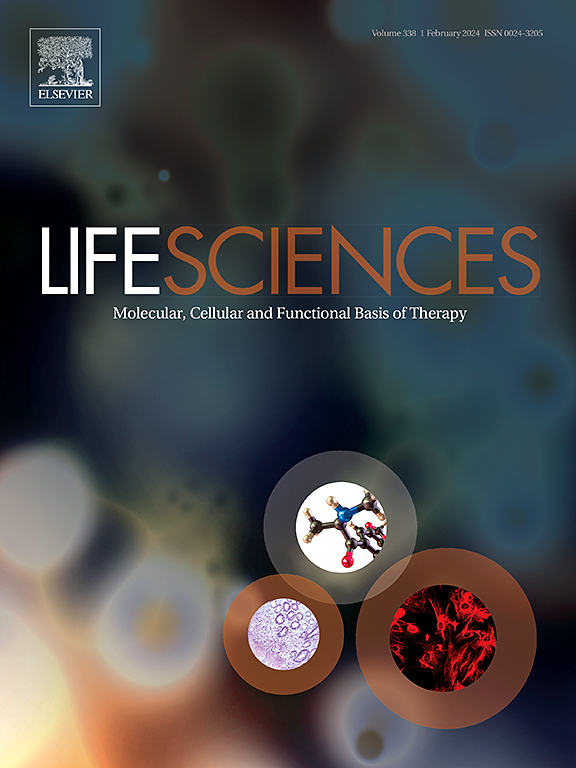组蛋白修饰在腹主动脉瘤发展中的作用。
IF 5.1
2区 医学
Q1 MEDICINE, RESEARCH & EXPERIMENTAL
引用次数: 0
摘要
心血管疾病及其相关的继发性并发症是全世界发病率和死亡率的主要原因。腹主动脉瘤(AAA)属于心血管疾病,在发达国家65 - 85岁 男性死亡人数中约占1.3% %[1]。AAA的发病机制主要是腹主动脉的病理性扩张,而腹主动脉过度扩张和破裂导致的死亡率高达85% %。1991年提出了一个标准,AAA型肾下主动脉直径应为正常直径[3]的1.5倍,McGregor还将AAA定义为在肾下段的主动脉直径大于30 mm[4]。虽然AAA的诊断似乎是决定性的,但没有特定的治疗方法来防止AAA扩大。当动脉瘤直径在男性达到55 mm,在女性达到50 mm或每年增长6 mm至8 mm时,有条件推荐选择性主动脉修复手术。然而,小动脉瘤也可能生长迅速或破裂的风险很高,甚至有些患者在出现手术指征之前就死于动脉瘤破裂。因此,控制危险因素和探索新的治疗方法逐渐成为动脉瘤治疗的关键方向。在过去的几十年里,吸烟、高血压、年龄和性别已被确定为AAA进展中的共同危险因素,但这些危险因素如何导致腹主动脉病理性扩张的机制尚不清楚。有趣的是,组蛋白修饰最近被认为是内在遗传景观和外在危险因素之间的重要联系,大量的研究致力于探索组蛋白修饰在AAA发病机制中的作用。本文就组蛋白修饰在AAA调控中的作用的研究进展进行综述。本文章由计算机程序翻译,如有差异,请以英文原文为准。

The role of histone modifications in the development of abdominal aortic aneurysm
Cardiovascular diseases with their related secondary complications are the main causes of morbidity and mortality worldwide. Abdominal aortic aneurysm (AAA) belongs to the cardiovascular diseases and causes approximately 1.3 % of all deaths among men between 65 and 85 years old in developed countries [1]. The pathogenesis of AAA mainly attributes to pathological dilation of the abdominal aorta, which will further lead to a high mortality rate up to 85 % due to excessive dilation and rupture [2]. A criterion was proposed in 1991 that AAA infrarenal aorta diameter should be 1.5 times the normal diameter [3], and McGregor additionally defined AAA as an aorta with a diameter greater than 30 mm in the infrarenal segment [4]. Although the diagnosis of AAA seems conclusive, there is no specific treatment to prevent AAA expansion. Elective aortic repair operation is conditional recommended when the aneurysm diameter reaches 55 mm in men, 50 mm in women or grows by 6 mm to 8 mm per year [5]. However, small aneurysms probably also grow rapidly or rupture at a high risk, and even some patients die from aneurysm rupture before they manifest surgical indications. Thus, controlling risk factors and exploring novel therapeutic approaches gradually substitute as key directions for aneurysm treatment. Smoking, hypertension, age and gender have been identified as the common risk factors during AAA progression in the past decades [6], but the mechanisms how these hazards contribute to pathological dilatation of abdominal aortas remain unclear. Interestingly, histone modifications have recently emerged as an important link between the intrinsic genetic landscape and extrinsic risk factors, and a plethora of studies have been dedicated to exploring the role of histone modifications in AAA pathogenesis. In this review, current progress on the contribution of histone modifications to the regulation of AAA will be summarized.
求助全文
通过发布文献求助,成功后即可免费获取论文全文。
去求助
来源期刊

Life sciences
医学-药学
CiteScore
12.20
自引率
1.60%
发文量
841
审稿时长
6 months
期刊介绍:
Life Sciences is an international journal publishing articles that emphasize the molecular, cellular, and functional basis of therapy. The journal emphasizes the understanding of mechanism that is relevant to all aspects of human disease and translation to patients. All articles are rigorously reviewed.
The Journal favors publication of full-length papers where modern scientific technologies are used to explain molecular, cellular and physiological mechanisms. Articles that merely report observations are rarely accepted. Recommendations from the Declaration of Helsinki or NIH guidelines for care and use of laboratory animals must be adhered to. Articles should be written at a level accessible to readers who are non-specialists in the topic of the article themselves, but who are interested in the research. The Journal welcomes reviews on topics of wide interest to investigators in the life sciences. We particularly encourage submission of brief, focused reviews containing high-quality artwork and require the use of mechanistic summary diagrams.
 求助内容:
求助内容: 应助结果提醒方式:
应助结果提醒方式:


